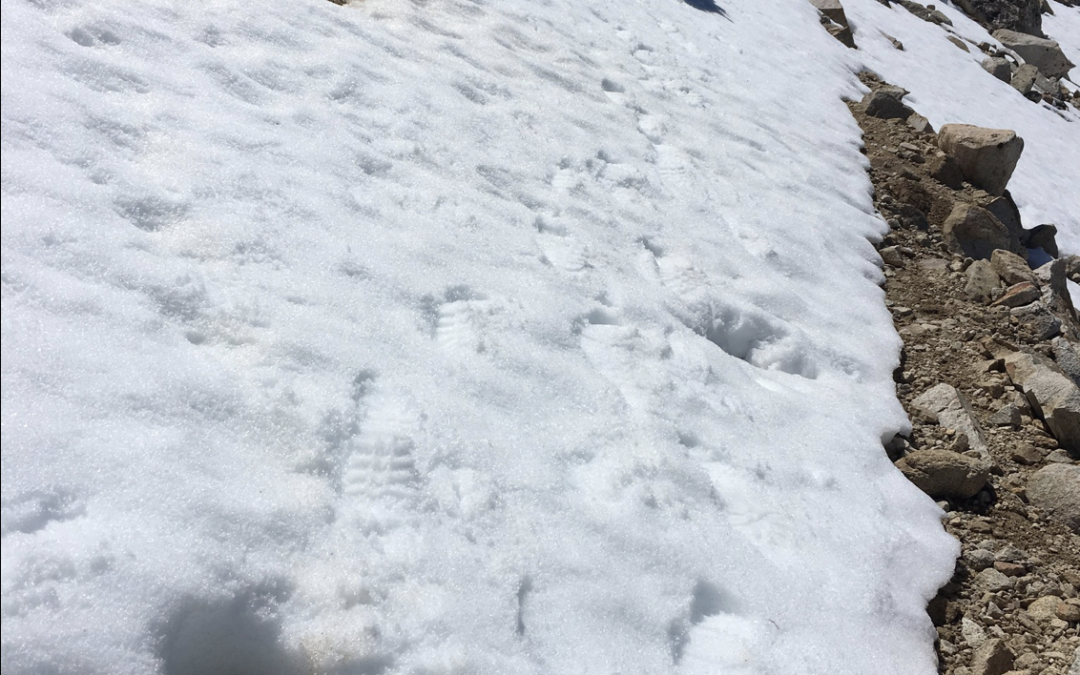Right now, at 10,000 feet of elevation and higher in the Sierra Nevada, the environmental conditions of weather and snowpack are typical of what we call “The Secret Season.”
What is this “Secret Season?”
The “Secret Season” is that time interval between the heavy snowstorms typical of “winter” and the onset of the spring Thaw at any particular elevation.
The requirement for it, of course, is not just the right time of year, but the right environmental conditions where any snow melt that occurs during the day refreezes at night.
This makes for a nice, solid, consolidated snowpack ideal for walking on without the weight or awkwardness of snowshoes.
So, if you want to head up your local Sierra canyon for a little weekend fun, pay attention to its elevation, aspect, amount of solar radiation it receives, recent cloud cover and storm activity (or lack, thereof), and local wind, but most importantly, its temperatures (both day and night), if you want to know the condition of the snowpack where you want to travel.
At low elevations where there still is snow, the environment will probably be warm enough to thaw out all that snow, making for a wet, soupy mess to walk through.
At middle elevations where snow is everywhere, but the temperatures are warming up, the snow will be somewhat frozen deep inside the snowpack, but on its surface it may be quite soft, causing you to “posthole” into it to unexpected depths while you try and negotiate “suncups” and other surface irregularities of odd snow shapes.
At higher elevations where the snow is everywhere, but the temperatures during the day are still down in the 40s and at night dropping into the teens or 20s, thus, refreezing the snowpack every night, you will find a nice, hard snow surface to walk on all day.
Yes, there will come a time at all elevations where the snow that’s going to melt, will melt out for the summer, but, if you’ve been following the Sierra snowpack this winter-spring, there’s so much of it that it’s not going anywhere fast!

